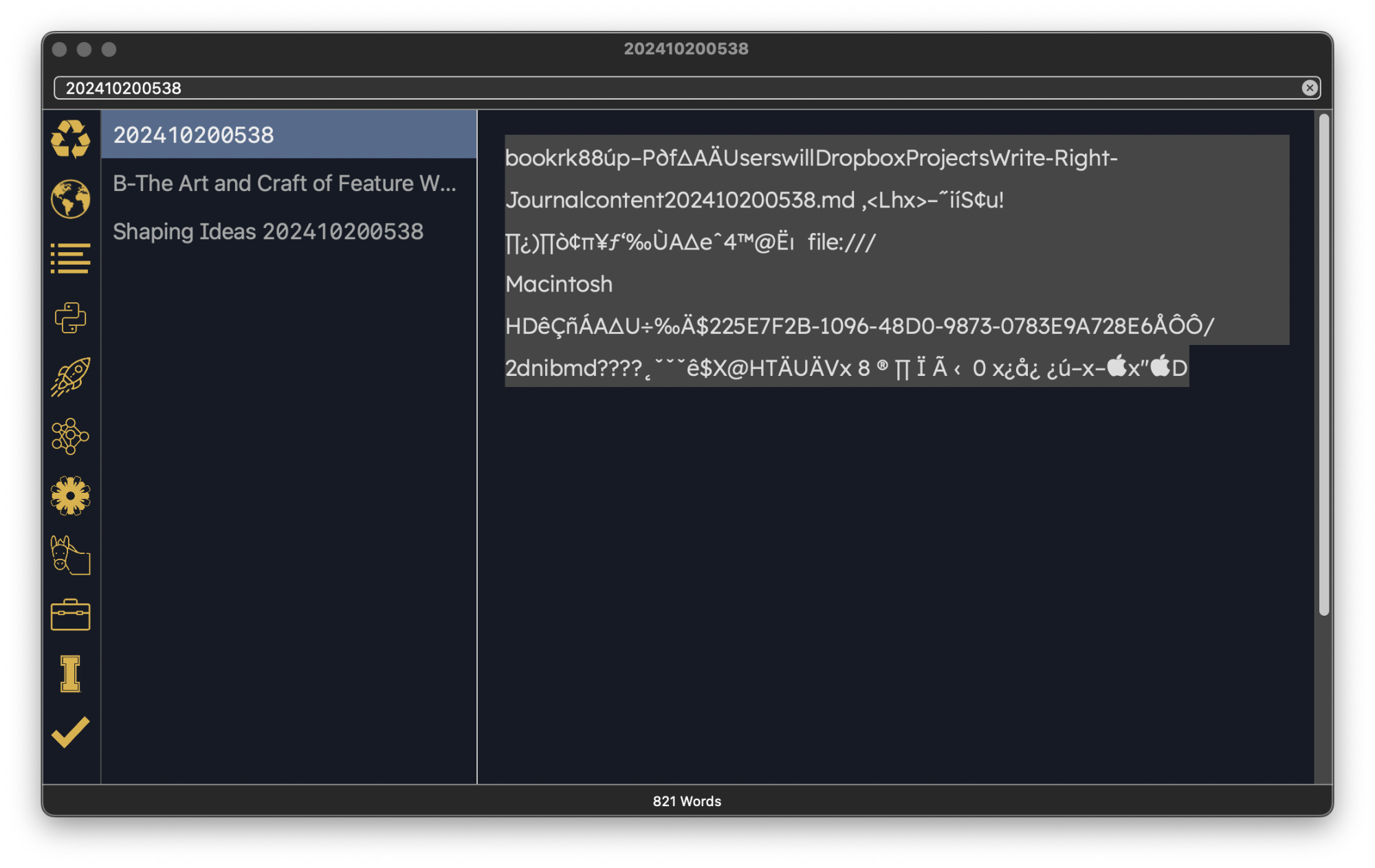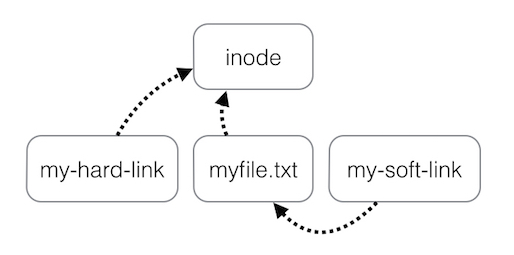[CLOSED] Making aliases of notes (symlinks)
I’m experimenting with using aliased files in The Archive, and am having trouble.
I created an alias copy of a note. It would not appear in the note list. Changing its name by removing the alias extension made it show up in the note list. When I open it in The Archive, this is what I get.
The name in the note list is accurate. The Word Count is inaccurate. In The Archive, it reports 821, and in IA Writer, it opens fine, but it reports 508. I see unusual gibberish and several blank lines in The Archive but the same file look fine in IA Writer.

Does anyone have any tips? I’m trying to put selected notes on the web. I’m using Jeykl for this and coding with VS Code. I’m posting the results at JAMM425 Magazine Feature Writing. Warning: this is a work in progress.
Will Simpson
My peak cognition is behind me. One day soon, I will read my last book, write my last note, eat my last meal, and kiss my sweetie for the last time.
My Internet Home — My Now Page
Howdy, Stranger!

Comments
>
Will, pardon my ignorance, but what do you mean by "aliased files"? I know what the word "alias" means and how it applies to file names on my computer, but I don't know the meaning when used regarding The Archive.
Create an alias file using a markdown file. Transfer it into the ZK. It will show up if it is renamed from
202410200538.md aliasto202410200538.md. Once you see it in a note list, try to launch it.The original source file would live in another directory, say
/Users/will/Dropbox/Projects/Write-Right-Journal/content/202410200538.mdbut the alias would live and work in/Users/will/Dropbox/zettelkasten/202410200538.mdWill Simpson
My peak cognition is behind me. One day soon, I will read my last book, write my last note, eat my last meal, and kiss my sweetie for the last time.
My Internet Home — My Now Page
Hmmm...I understand your description now. All I can think of is that the "alias" file must contain some hidden, embedded information so that the OS knows it is an alias file and where the original is located.
I typically do not rename alias files - I want to remember that the file I am seeing is an alias, not at its original location. But then the only place I use aliases is on my desktop - I want to store the file elsewhere, but I don't want to go looking for it all the time, so I drop an alias on my desktop.
When you open an alias with almost any app, it knows to look in the file's original location but not The Archive or VS Code.
Will Simpson
My peak cognition is behind me. One day soon, I will read my last book, write my last note, eat my last meal, and kiss my sweetie for the last time.
My Internet Home — My Now Page
Explanation from https://stackoverflow.com/questions/185899/what-is-the-difference-between-a-symbolic-link-and-a-hard-link contains this graph:

Comparison with Finder Aliases: https://stackoverflow.com/questions/18452596/whats-the-difference-between-ln-s-and-alias
Symbolic and hard links are a file system feature. Finder Aliases are a feature of macOS's Finder and comparatively brittle (in terms of how many operating system hops it would survive, or how well you can port it)
For portability, symbolic links would be preferable. I believe I just disabled symlink lookup in the app -- to avoid e.g. linking to resources out of the archive directory, which then would break once you remove the original resource and try to open the file in the app.
Author at Zettelkasten.de • https://christiantietze.de/
Thanks for the refresher on inode linking. Your explanation brought back old memories of when I worked in HP Unix. Hard links do work for my use case. Thanks again, and for now, the case is closed.
Will Simpson
My peak cognition is behind me. One day soon, I will read my last book, write my last note, eat my last meal, and kiss my sweetie for the last time.
My Internet Home — My Now Page